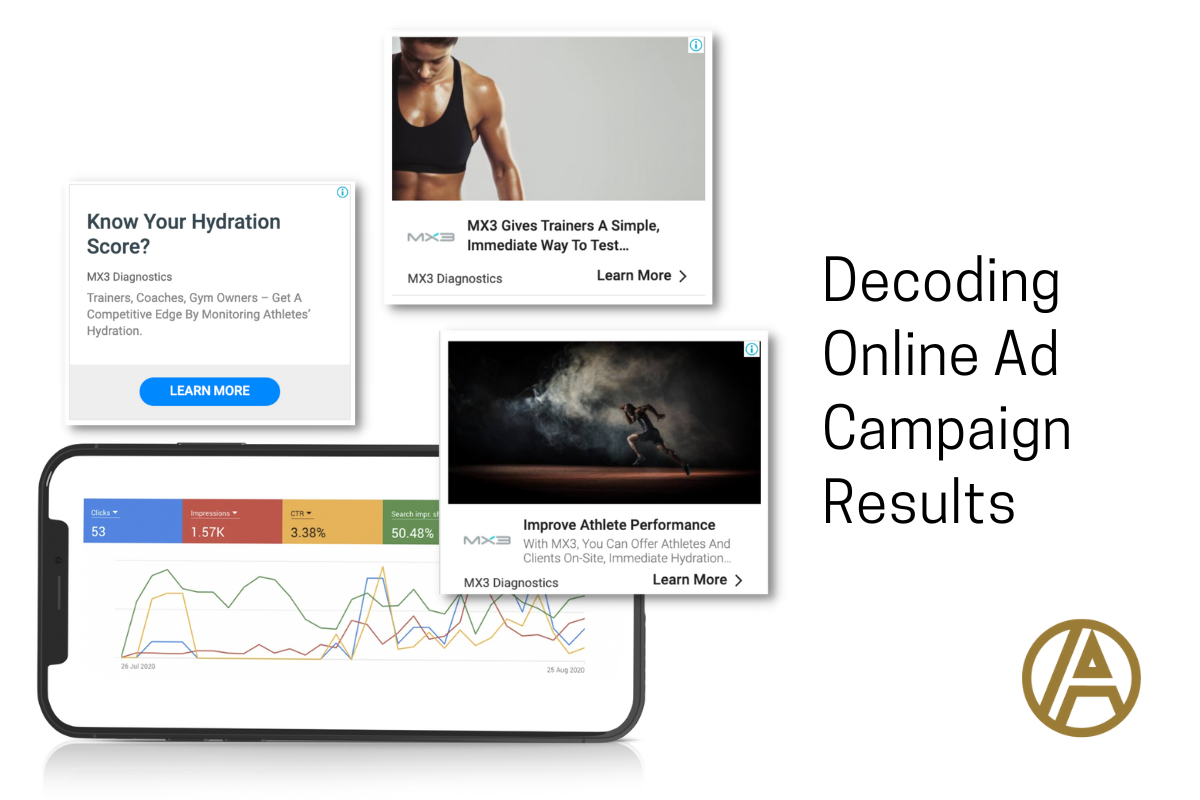Impressions.
Clicks.
Conversions.
As you sift through the results of your online ad campaign, terms like these can be baffling at best!
We’re here to help you decode, decipher and downright deconstruct the “ins and outs” of your campaign stats.
LET’S DISCUSS YOUR DIGITAL MARKETING STRATEGY
Let’s step into a website scroller’s shoes for a moment and go through their process.
Impressions
Let’s say website scroller “Sierra” has been searching for gym equipment and, by-golly, that's right in line with your target shopper! Up pops a snappy online ad promoting your exclusive new line of soft-grip “Pump it Up” weights.
Now, here’s the rub with impressions: Sierra may...or may not actually see the ad.
It might stick out...or it might be missed altogether.
An impression is simply the ad making its debut to Sierra online. Much like a commercial pops up during your favorite TV show, Sierra may or may not pay attention to it.
Clicks
Now in the case of your online ad for your trademark “Pump it Up” weights, things are looking up. The slick design, bright neon colors, and soft-grip promise of your ad are appealing to Sierra.
So she clicks on your ad.
A click of an ad is, you guessed it...a “click” in the web stat world. Receiving that coveted “click” is one of the most important measurable actions in an online campaign.
This transitional moment takes Sierra to your robust new website where, hopefully, a sale will follow.
*Note: when analyzing metrics from any ad campaign, it’s important to understand a few things about clicks and impressions:
- An impression must occur before you can get a click, but not every impression results in a click. . Given this, your impression rate is often much higher than your number of clicks.
- You will see the term “CTR.” This stands for your Click through Rate. This ratio is determined by your clicks divided by the number of impressions. So, if you had 1000 impressions and 25 clicks from that online ad, then you would have a 2.5% CTR. A high CTR means things are going well for your campaign, while a lower CTR means you might need to make some modifications.
Conversions
Up to this point, Sierra has been captivated by your “Pump it Up” ad. She then clicks on your ad and is directed to your website. And now, Sierra decides to purchase a set of your new line of neon-fabulous soft-grip weights.
Your ultimate goal has been met: your ad was shown (impression), someone was interested enough to click on the ad (click), and then that person purchased a product from your website (conversion).
Now, a conversion doesn’t have to be purely sale-related.
As you are analyzing your data, keep in mind that a conversion could also include capturing leads through website form fills, phone calls to your business, event signups, or resource downloads (like a PDF) from your website. A conversion is any action taken as a result of an ad that you define as valuable to your business.
You’ll measure effectiveness, or your return on investment (ROI), by assessing how many conversions were made against your total number of dollars spent.
In sum, it’s important to take into account how all of these elements work together.
Continue to test and modify your campaign to see what’s getting the most traction. What’s giving you the best ROI and CTR percentages? Staying close to your analytics is key to making sure that your dollars are well-spent and that the number of impressions, clicks and conversions are effective for your business goals.
NEED HELP GETTING STARTED?
Have more questions about your online ad campaign, or just want to brainstorm with our team at ALINE about your digital marketing strategy? Don’t hesitate to reach out!



